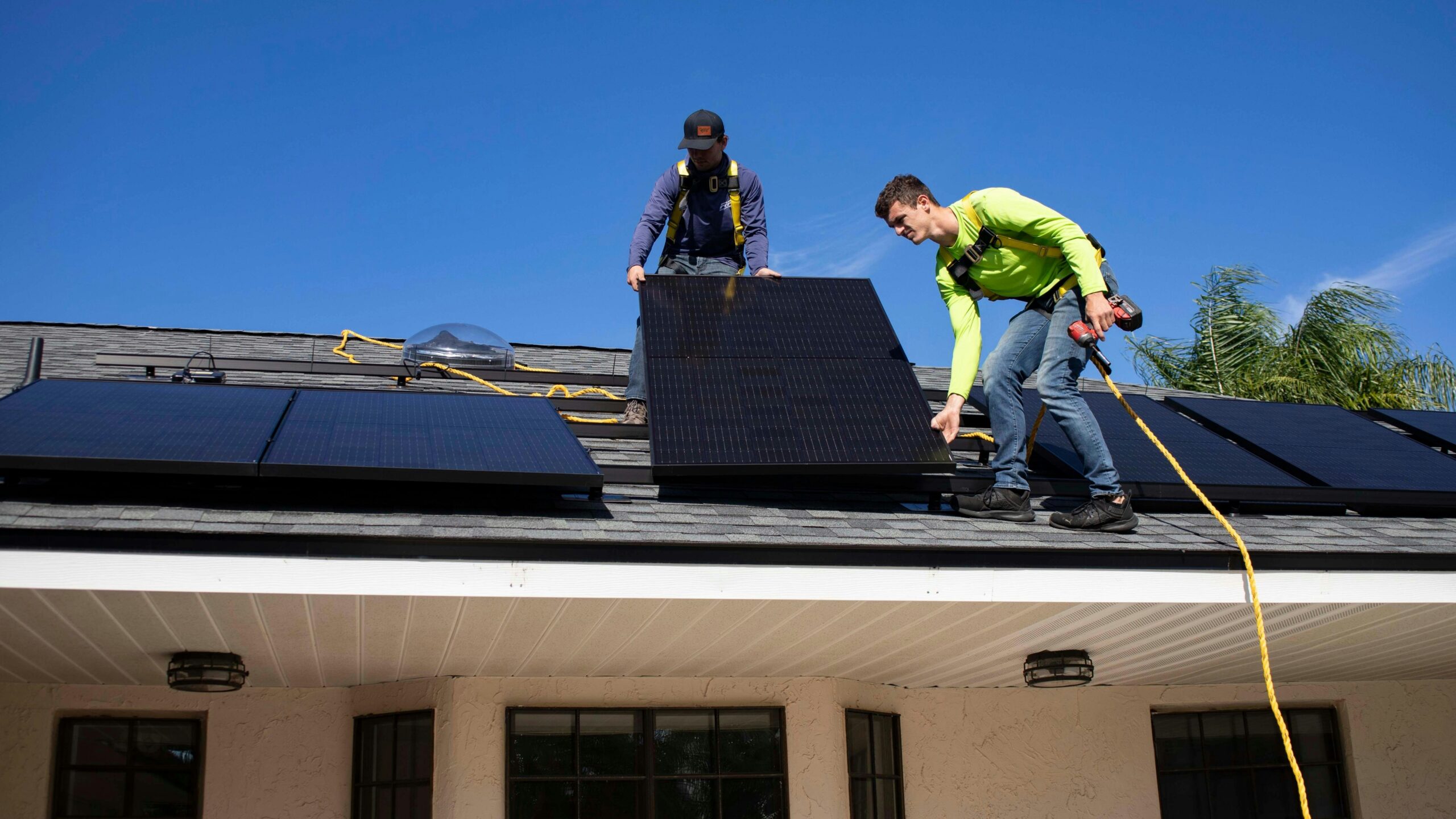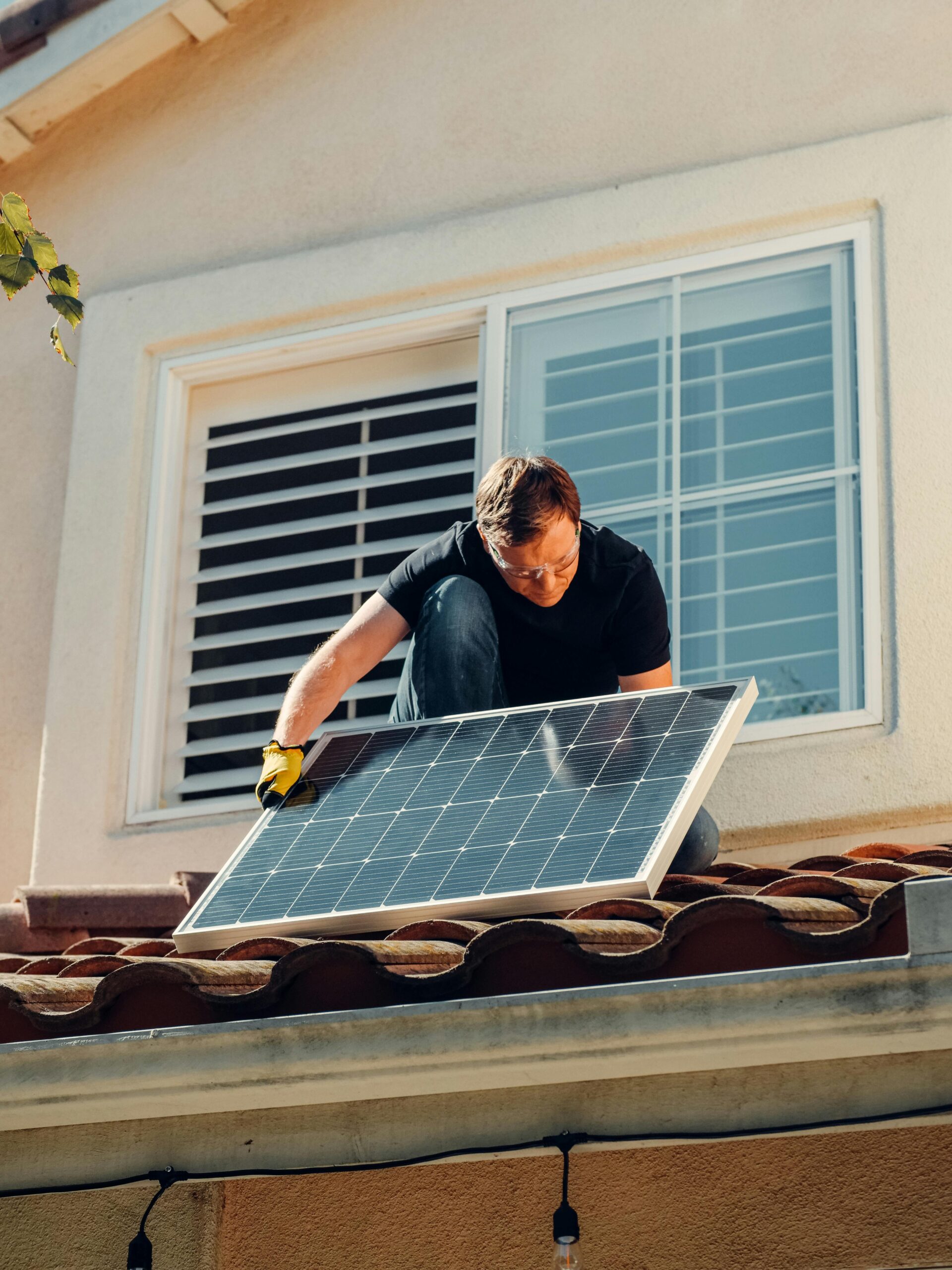Breaking Down the Technology: How Panels Convert Sunlight to Power
Ever wondered how those sleek panels on rooftops turn sunlight into usable electricity? It’s a fascinating process that’s simpler than you might think! Let’s take a deep dive into the technology behind solar panels and how they’re powering homes worldwide. This article will give you a light-hearted, easy-to-follow overview of how residential solar installations work, how they help reduce bills, and why they’re a great step toward sustainable living. So, let’s flip the switch and shed some light on how solar power really happens!
The Basics: Solar Cells and Photovoltaics
At the core of every solar panel is a nifty little device called a solar cell, which does all the heavy lifting. These cells are typically made from silicon, a durable and abundant material. When sunlight hits a solar cell, the energy from the sun’s rays—mainly photons—kick-starts a process inside the silicon. This process is called the “photovoltaic effect,” and it’s the magic that turns sunlight into electricity. It sounds complex, but think of it as sunlight energizing particles in the panel, sparking them to create power.
Each solar panel contains many cells working together, collecting as much sunlight as possible. The more sunlight the cells absorb, the more electricity they generate. This is why, in residential solar installations, you often see an array of panels covering a whole rooftop—they’re working as a team to maximize energy capture!
From Sunlight to DC Power
So, what exactly happens inside these solar cells? When sunlight hits, it excites electrons, tiny particles with an electric charge inside the silicon. This energy boost causes the electrons to move around, creating a direct current (DC) flow of electricity. Think of it like a crowd of excited fans rushing out of a stadium—this movement creates the electric current!
This DC power is what solar cells naturally produce. But here’s the thing: our homes don’t use DC power; they use alternating current (AC). This is where an inverter, another essential part of residential solar installations, steps in. The inverter converts DC power to AC power, the kind you use to run your lights, fridge, and all those chargers. Without the inverter, all that beautiful solar energy would be like having a key that doesn’t fit your door!
Meet the Inverter: Converting DC to AC
The inverter is like the translator in this solar setup, turning the solar power into something your appliances can understand. Most residential solar installations come with a centralized inverter or even micro-inverters attached to each panel. When DC power flows into the inverter, it’s switched to AC power through a clever process of electronic conversion. And voilà—you have usable power!
Inverters are incredibly important because they ensure your system delivers safe, usable power. In fact, they’re often called the “brains” of the solar operation. Some high-tech inverters even allow you to monitor your solar production in real time, so you can see how much power your panels are creating throughout the day.
Wiring It Up: How Power Reaches Your Home
Once your inverter has done its job, the AC power is ready to flow into your home. But how does it get there? Simple wiring connects the inverter directly to your home’s main electrical panel. At this stage, the electricity produced by your residential solar installation joins the power already running in your home. Depending on your setup, you might use all your solar power immediately, or it might feed back into the grid. Some systems even let you store extra energy in batteries, keeping it handy for cloudy days or night use.
With every watt produced, your home is getting a boost in clean, renewable energy, and you’re likely reducing your energy bill, too. It’s a win-win for your pocket and the planet!
Solar Energy and the Grid: Sharing Power with Your Community
One of the coolest parts of residential solar installations is that they can be tied to the grid. If your system produces more power than you need, it can flow back into the public electricity grid. In many places, you can get credit for this extra power through programs called net metering. It’s like lending your neighbor some sugar—but here, you’re lending them energy and earning a credit in return!
In a way, residential solar installations turn homes into mini power stations. During sunny days, you’re generating clean energy not just for yourself but also for others. And who doesn’t want to be the friendly neighbor who’s helping power the community?
Why Residential Solar Installations Are a Bright Idea
Solar panels might seem like advanced technology, but at the heart of it, they’re just using physics to harness a natural resource. By converting sunlight into electricity, residential solar installations provide homes with a consistent, renewable source of energy. Unlike fossil fuels, solar power is endlessly renewable and doesn’t pollute. You’re not just lowering your energy bills but also helping reduce your carbon footprint.
Residential solar installations can be a game-changer for homeowners who want to save money and contribute to a greener world. And thanks to this technology, using solar energy has become more accessible and easier than ever before. Solar cells, inverters, and a bit of sunshine work together to provide clean, reliable power. With the added benefit of potential tax incentives and rebates, it’s no wonder so many people are choosing solar!
Components of a System: Inverters, Batteries, and Beyond
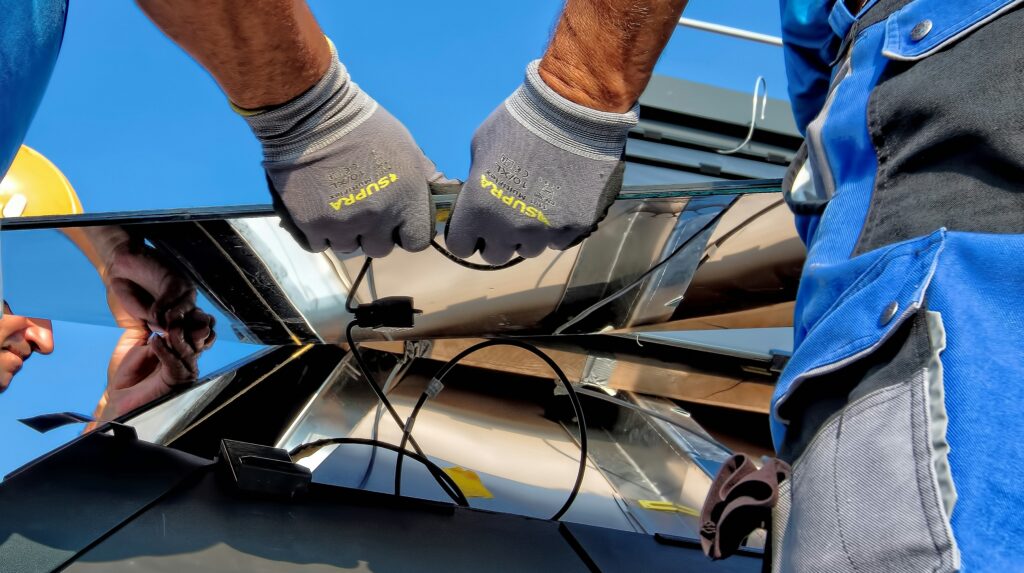
When it comes to residential solar installations, solar panels may be the stars, but they’re not the whole show. Solar power systems have a few other key players working together to turn sunshine into reliable, usable electricity for your home. From inverters to batteries to a few extra components, each part plays a unique role in keeping your solar energy running smoothly. Let’s break down the essential pieces in your solar puzzle!
Inverters: The Heart of Your Solar System
Inverters are like the translators in your solar setup, taking the power produced by your panels and converting it into the type of electricity your home uses. Solar panels naturally create direct current (DC) power, but your home is wired for alternating current (AC). This is where the inverter steps in, transforming DC into AC so you can power your lights, appliances, and chargers.
Without an inverter, all the power your panels produce would be useless in a regular home. Most residential solar installations have a single centralized inverter, though some systems use microinverters on each panel. The big benefit of microinverters? They optimize the power output of each individual panel, making your system more efficient, especially on cloudy days or when parts of the array are shaded. In short, the inverter is like the brain of your solar system, making sure everything works in harmony!
Batteries: Storing Solar for When You Need It Most
Imagine it’s a cloudy day or nighttime, and there’s no sunshine to fuel your panels. This is when a solar battery really shines. Batteries store the excess energy produced by your panels during the day, allowing you to tap into it when the sun isn’t shining. Think of it as your personal energy bank account, where you save up power to use later. Residential solar installations with batteries are especially useful if you experience frequent power outages or want to rely less on the grid.
Batteries come in different sizes and capacities, so you can choose one that suits your energy needs. Some homeowners opt for a single large battery, while others install multiple batteries to maximize their storage. The best part? If you have extra stored energy that you don’t need, some systems allow you to sell it back to the grid for credits. With a good battery system, your solar setup becomes a reliable, flexible source of power, day or night.
Charge Controllers: Keeping Your Batteries Happy
In a solar setup, the charge controller acts as the gatekeeper between your panels and your battery storage. It regulates the amount of electricity flowing into your batteries, ensuring they don’t overcharge or discharge too quickly. Without a charge controller, your batteries could be damaged by fluctuating power levels, affecting their lifespan and efficiency.
Charge controllers come in different varieties, with some using maximum power point tracking (MPPT) technology to make the most of each ray of sunlight. MPPT controllers adjust to changing light conditions, maximizing the power sent to your batteries even when the sun is low. In residential solar installations, charge controllers play a crucial role in prolonging battery life and making sure your stored energy is always available when you need it.
Monitoring System: Tracking Your Solar Performance
How much power are you actually generating? Is your system working efficiently? A solar monitoring system gives you the answers. This component lets you track your solar performance in real time, so you can see how much energy your panels are producing, how much is going into storage, and how much power you’re using. Many modern inverters come with built-in monitoring, allowing you to view everything from a smartphone or computer.
With a monitoring system, you can catch potential issues early, optimize your energy use, and even learn which times of day your system is most productive. It’s a handy way to stay connected to your energy production and make the most of your residential solar installation. Plus, there’s a certain satisfaction in watching those numbers rise as the sun shines!
Disconnect Switches and Safety Components
Safety always comes first, even in solar installations. Disconnect switches are essential for safely shutting off your solar system during maintenance or in case of emergencies. These switches separate your solar components from the rest of your electrical system, so you can work on them without worry. In many places, disconnect switches are legally required for residential solar installations, ensuring that both you and utility workers stay safe.
Some systems also include additional surge protectors or safety switches, adding extra layers of protection for your panels and inverters. By keeping these safety components in place, you’re ensuring your solar setup can operate securely through storms, power outages, and any maintenance work. It’s all about keeping your system safe and sound while it powers your home.
Racking and Mounting: The Foundation for Your Panels
While they don’t generate power, racking and mounting systems are vital components in residential solar installations. They provide a sturdy foundation for your panels, holding them securely on your roof or ground area. Mounting systems are designed to withstand various weather conditions, from strong winds to heavy rain, and they’re built to last for decades.
Racking systems come in different designs, allowing you to adjust the angle of your panels for optimal sunlight exposure. This flexibility lets you make the most of every sunny hour, maximizing the energy you capture. A well-installed racking system not only keeps your panels safe but also boosts their efficiency by positioning them perfectly toward the sun.
Your Role in the System: How Usage Impacts Efficiency
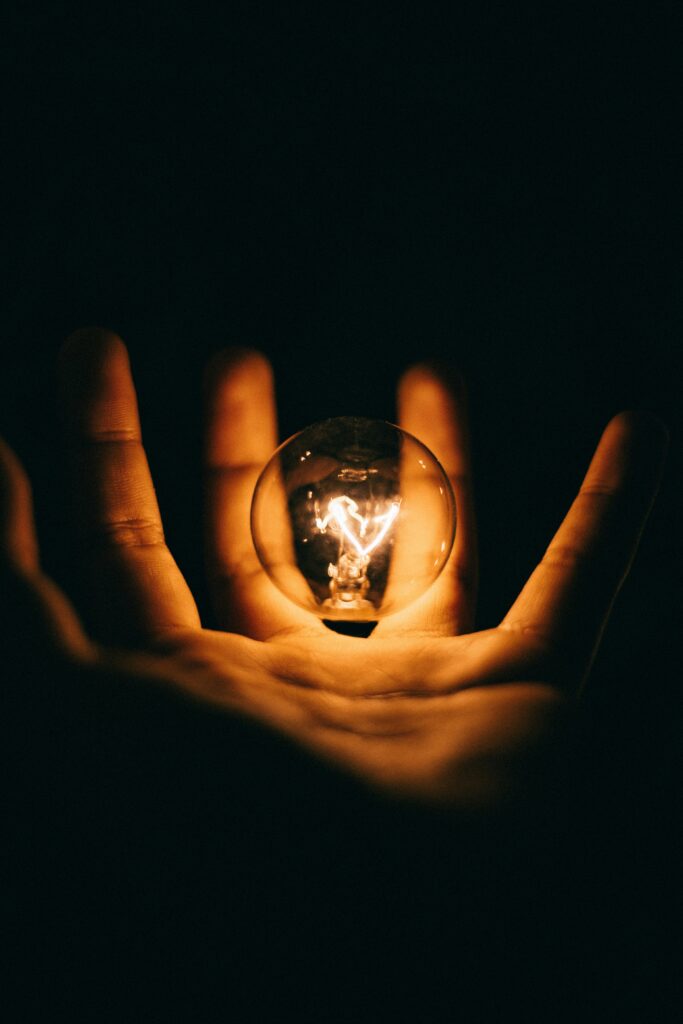
When it comes to residential solar installations, it’s not just the panels, inverters, and batteries doing all the work. As a homeowner, you play a huge role in how well your solar system performs. From managing when you use power to understanding how to maximize your setup’s potential, your habits can directly affect your solar system’s efficiency. Let’s explore how your day-to-day choices can make your system work smarter, not harder, so you get the best out of every sunny day!
Timing Matters: Using Power When the Sun Shines
One of the simplest ways to improve the efficiency of your residential solar installation is to use energy when the sun is shining. Solar panels are most productive during peak sunlight hours, typically between late morning and early afternoon. By aligning your high-energy activities with these hours, you can draw more power directly from your solar setup rather than pulling from the grid or draining your battery storage.
For example, try running the dishwasher, washing machine, or charging devices during the day. If you’re working from home, using power-heavy equipment during peak sunlight can make a noticeable difference. Not only does this maximize your solar system’s efficiency, but it can also reduce your electricity costs. Just by making small adjustments to your schedule, you’re helping your solar system perform at its best!
Energy Efficiency at Home: Little Changes, Big Impact
It might sound surprising, but the overall energy efficiency of your home has a big impact on how well your solar system works. Simple actions, like upgrading to LED light bulbs, using energy-efficient appliances, or turning off lights when you leave a room, can significantly reduce your energy consumption. When your home requires less power to operate, your solar panels can cover more of your energy needs, even on cloudy days or in the evening.
Think of it as giving your solar system a little extra support. The more energy-efficient your home is, the less strain there is on your solar setup. This can extend the lifespan of your batteries, reduce reliance on the grid, and help your system run more smoothly. Residential solar installations work best when they’re not overloaded, so a few small adjustments to your energy habits can make a big difference!
Smart Appliances and Solar Power: A Perfect Pairing
If you have smart appliances, you’re in luck—they’re perfect partners for solar power. Many smart devices can be programmed to run during certain times of the day, so you can set them to operate when your solar panels are producing the most energy. Some systems even allow you to control appliances remotely, so if you’re out and want to make the most of a sunny afternoon, you can start your laundry or dishwasher right from your phone!
These little tricks help you use more of your own solar-generated electricity, maximizing the efficiency of your residential solar installation. With automation, you won’t have to worry about timing everything perfectly; your appliances can run on a set schedule, allowing you to save energy without lifting a finger. Pairing smart appliances with solar power is like having a team working in harmony to keep your energy usage low and your savings high.
Battery Storage: Saving Energy for When You Need It
When it comes to solar power, one of the biggest advantages is the ability to store excess energy in batteries. However, you’ll get the most out of your battery storage by knowing when to use it and when to save it. During the day, it’s ideal to use power directly from your panels, allowing your battery to fully charge. This means that when the sun goes down, you have a backup source of energy to keep things running smoothly.
Conserving battery power for evenings and cloudy days can help stretch your solar resources, making your residential solar installation even more efficient. Avoid draining your batteries too quickly by turning off high-energy appliances at night or using them only when the battery charge is sufficient. With just a few small adjustments, you can make sure your battery storage lasts longer and provides you with reliable power whenever you need it.
Keep an Eye on Your Usage: Monitoring for Better Efficiency
Monitoring your energy usage is a great way to understand your habits and make changes that improve efficiency. Many residential solar installations come with monitoring systems that let you track how much power you’re generating, using, and storing. By watching your energy data, you can spot trends, adjust usage, and ensure you’re making the most of your system.
For instance, you might notice you’re using more energy during peak production hours than you thought. Or maybe you’ll see that your batteries are depleting faster than expected. With this information, you can make quick changes to your habits. Monitoring makes you more aware of how your usage affects your system, empowering you to optimize your energy use and get the best performance from your solar setup.
Involving the Whole Household: Teamwork for Efficiency
Making the most of your residential solar installation isn’t a solo effort—it can be a fun project for the whole family! Involving everyone in small energy-saving habits can have a big impact on your system’s efficiency. Encourage family members to turn off lights, unplug chargers, and run major appliances during peak sunlight hours. Kids especially love learning how solar power works, so it can be a fun way to teach them about renewable energy.
When everyone pitches in, it creates a team mentality around conserving energy and maximizing solar power. Plus, involving the family can turn energy-saving habits into second nature. The more everyone is on board, the better your solar system will perform, making your investment even more valuable over time.
Small Changes, Big Benefits: Optimizing for Maximum Efficiency
In the end, getting the best performance out of your residential solar installation comes down to how you use the energy it generates. Simple adjustments in timing, energy efficiency, and smart technology can have a huge impact on the effectiveness of your system. Residential solar installations are already a fantastic way to save on energy bills and reduce your carbon footprint, but a little bit of mindfulness can make them even better.
By taking control of your energy habits and understanding the impact they have on your solar setup, you’re turning your home into an efficient, green powerhouse. With your help, your solar system can run as smoothly and effectively as possible, powering your home sustainably for years to come!
Day-to-Day Operations: Maintenance and Monitoring Basics
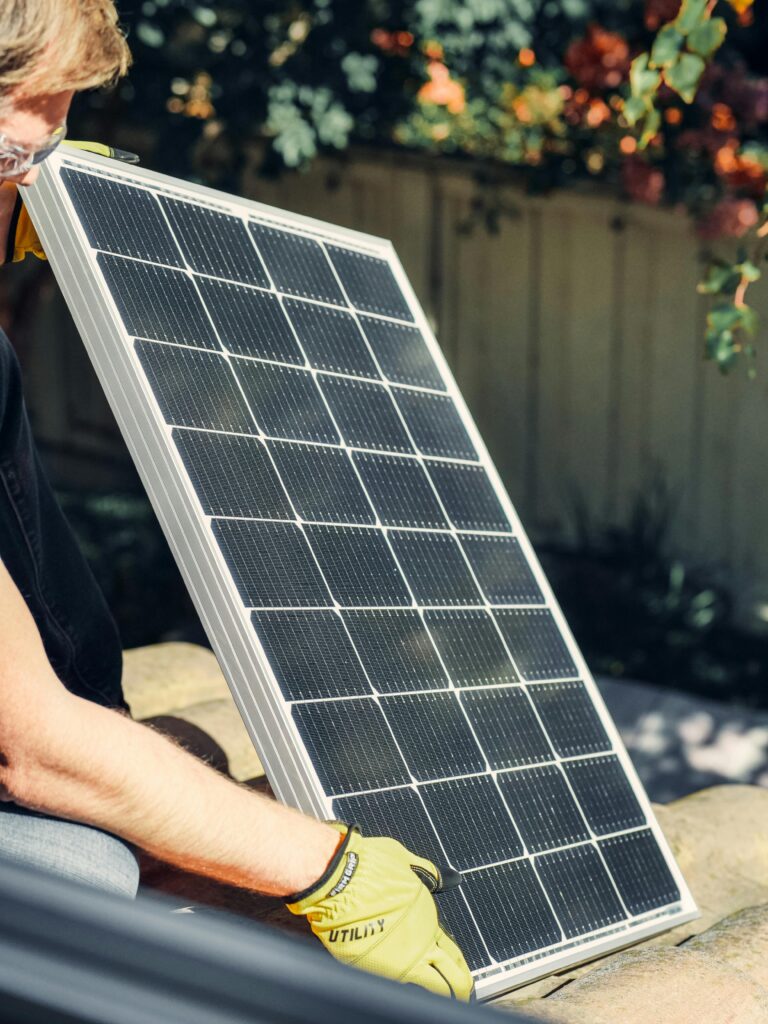
Congratulations! You’ve invested in a residential solar installation and are all set to enjoy clean, renewable energy. Now that your system is up and running, it’s time to keep an eye on it to ensure it performs at its best. Solar panels require minimal maintenance, but a few simple routines can make a big difference in efficiency and longevity. Let’s go over some day-to-day operations, covering everything from basic cleaning to monitoring tips so you can keep your system shining bright!
Keeping It Clean: Panel Maintenance 101
Your solar panels do most of the work by sitting in the sun, soaking up rays, and producing power. However, over time, dirt, dust, and even bird droppings can accumulate on the panels and block sunlight. Cleaning your panels a few times a year helps them stay efficient and keeps them looking fresh. Usually, a soft brush or sponge with water is all you need to remove the buildup. Avoid abrasive materials or harsh chemicals, as they could damage the panels.
If you live in an area with plenty of rain, nature might handle most of the cleaning for you. But during dry months, giving your panels a quick rinse will help them stay clear and productive. By keeping them free of grime, you’re ensuring your residential solar installation continues to produce maximum power with minimal effort on your part.
Watching the Numbers: Monitoring Your System’s Performance
One of the best parts of having a solar installation is tracking your energy production. Most systems come with monitoring software that lets you check how much power your panels are generating and how much you’re using. Monitoring systems allow you to spot any dips in performance early, so you can address them before they affect your energy savings.
You can view performance data on your phone or computer, making it easy to stay in the loop. If you notice your system isn’t producing as much power as expected, it might be time to investigate. Checking the numbers regularly can help you spot trends, like when your panels produce the most energy, so you can adjust your energy usage accordingly. With just a quick check now and then, you’re well on your way to keeping your solar setup at peak performance!
Seasonal Checkups: Prepping for Changes in Weather
Your solar panels are designed to withstand all kinds of weather, but a little seasonal prep can go a long way. As seasons change, so do sunlight hours and weather conditions. Checking your system as part of a seasonal routine is a smart way to ensure it’s ready for what’s ahead. In the fall, make sure leaves or debris haven’t gathered around your panels. In the winter, clear any snow that might be blocking sunlight.
If your area experiences heavy rain, wind, or hail, inspect the panels and mounts for any signs of wear. Doing these quick seasonal checkups will keep your residential solar installation resilient through all weather conditions. Plus, this gives you peace of mind, knowing your system is secure and ready for each season’s unique demands.
Inverter Maintenance: The Power Behind the Panels
Your inverter plays a vital role by converting the energy from your solar panels into usable power for your home. Since it works hard every day, the inverter should be checked occasionally to ensure it’s in good condition. Most inverters come with indicator lights or status screens to alert you of any issues. If the lights flash or show an error code, it could be time for a closer look.
A healthy inverter typically produces a soft hum, so if you notice strange noises or temperature changes, it’s wise to contact your installer. Regularly checking the inverter is one of the simplest ways to maintain the heart of your residential solar installation. Remember, a well-maintained inverter means reliable power, day in and day out!
Battery Checkups: Optimizing Your Storage System
If your residential solar installation includes battery storage, giving it some regular attention will help you get the most from your setup. Batteries store excess energy, so you have power when the sun isn’t shining, making them a valuable addition to your system. Check your batteries every few months to ensure they’re charging and discharging as expected.
Keeping the batteries in a temperature-controlled space also extends their lifespan. Extreme heat or cold can impact their performance, so if they’re in an attic or garage, make sure it’s well-ventilated. Batteries are generally low-maintenance, but with a few checkups, they’ll keep your solar energy stored safely and ready to use when you need it most.
When to Call a Pro: Knowing When to Seek Help
While most maintenance tasks are simple and can be done by homeowners, sometimes it’s best to call in a professional. If you notice any persistent drops in performance, strange noises from the inverter, or physical damage to your panels, contacting your solar provider or installer is a wise move. They can perform a thorough inspection and address any issues you might not be able to fix on your own.
Routine maintenance checks from a professional once every year or two can also help ensure everything is working as it should. Pros have specialized equipment to assess your residential solar installation’s health and can offer tips for optimal performance. Calling in an expert doesn’t just fix issues; it helps extend the life of your system, so you can keep enjoying those energy savings.
Enjoying the Benefits of Proactive Care
When it comes down to it, residential solar installations are incredibly user-friendly. A little proactive care goes a long way, and by keeping up with basic maintenance and monitoring, you’re setting yourself up for years of clean, efficient energy. With just a few easy steps, you can ensure your solar system operates at its best, helping you save on energy costs and reduce your carbon footprint.
Think of your solar panels as a long-term partner in your energy journey. By keeping an eye on their performance, giving them a gentle clean, and making sure each component is in good condition, you’re contributing to a more sustainable home. Plus, knowing your system is running smoothly lets you enjoy the peace of mind that comes with harnessing the power of the sun. So, here’s to sunny days, clean panels, and an efficient, well-maintained solar setup!
Conclusion: A Brighter Future with Solar Power
Keeping your solar system in tip-top shape is simpler than you might think. With a little attention to maintenance and monitoring, you’re ensuring that your residential solar installation will continue to deliver clean, renewable energy for years to come. By taking small, proactive steps like cleaning your panels, monitoring your system’s performance, and doing seasonal checkups, you’ll maximize the efficiency and lifespan of your solar investment. Plus, it’s a great feeling knowing that you’re contributing to a more sustainable future.
If you’re ready to go solar but would like a bit of help along the way, Aspergo Projects is here for you. We offer residential installation services with a complete, streamlined process—from consultation and product supply to the full installation of your system. With Aspergo, you’re not just getting solar power; you’re getting the support and expertise to make the transition smooth and efficient. Let’s work together to create a brighter, more sustainable home powered by the sun!

